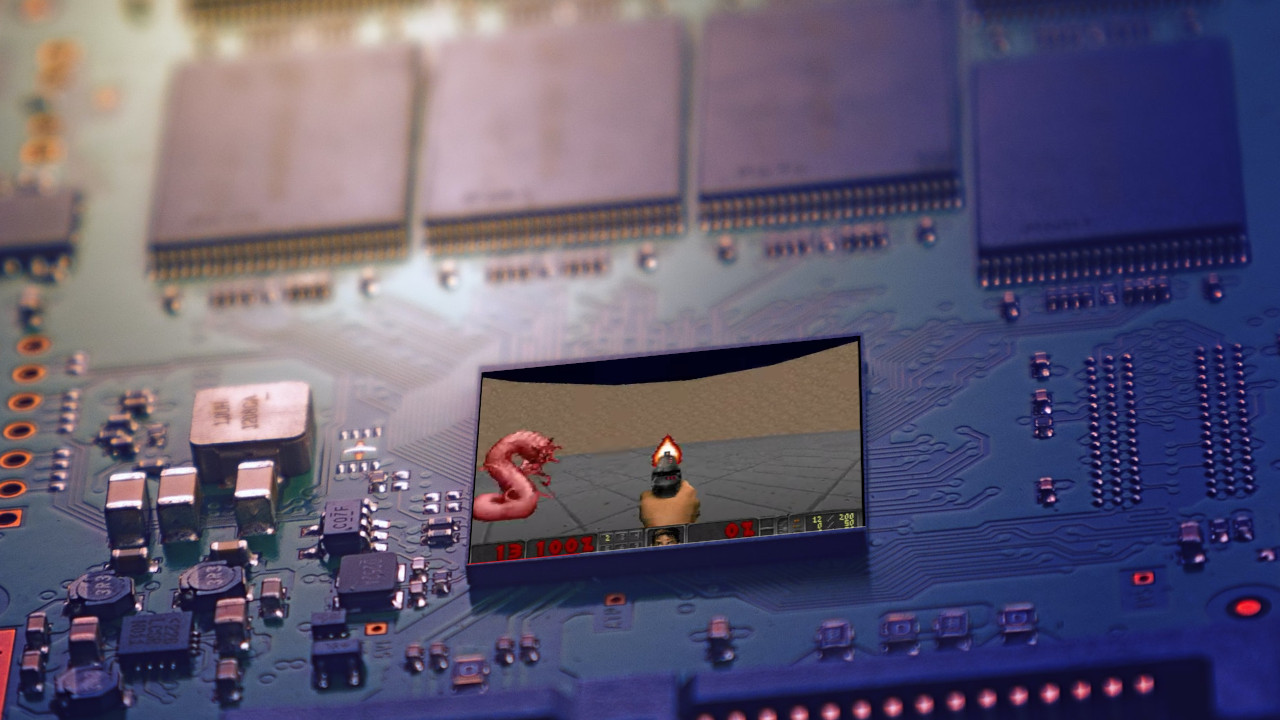
Neural Chip Plays Doom Using a Thousandth of a Watt
Doom is the game that became a benchmark. From its humble beginnings on a 386 PC, it has been ported to run on everything, even the humble Raspberry Pi Pico. “Big deal,” you say, but this story from IEEE Spectrum moves away from running Doom on lower-spec hardware. Instead, we see how an ultra-low power chip has learned how to play Doom using just one milliwatt of power!
Let’s quantify 1 Milliwatt of power. It is 1/1000 of a Watt, but even that low level of power consumption is hard to comprehend. Take, for example, Nvidia’s RTX 4090, this card can consume around 400-450 Watts of power. That is roughly 400,000 times more power than Syntiant’s NDP200 uses. Sure, the NDP200 won’t make it onto our list of Best GPUs, as it is more about using data to make decisions based on training. The Doom slaying is just for fun.
Syntiant’s NDP200 (Neural Decision Processor) is an ultra-low power chip for neural networks. It is primarily used to monitor video and audio to trigger events that other systems will react to. The NDP200 can run at up to 100 MHz and even has 26 GPIO pins, just like the original Raspberry Pi.
Syntiant trained the NDP200’s neural network using VizDoom, a version of Doom used for AI research and reinforcement learning from raw visual information. Training required understanding what the neural network was seeing, primarily identifying the enemy and ultimately defining a response. In this case, see demon, shoot demon. The “player” is tasked with defending a circular room that is under constant attack. The neural network had to learn how to play Doom, which also meant learning how to conserve ammunition. The neural network consisted of approximately 600,000 parameters, all of which were squeezed into the NDP200’s 640Kb of RAM and the neural core, running at 9 gigabytes per second.
The purpose of the demo is not to show how well it can play Doom, but to demonstrate how efficient the NDP200 is at “bounding-box person detection” which would normally require a much more powerful processor. Using just 1 Milliwatt of power to scan six frames of video to perform this task, the NDP200 could be easily integrated into vehicle and home security systems. Syntiant claims that this is 1/100 of the power that an Arm Cortex A53, the same Arm chip that powers the Raspberry Pi 3.
For now, the NDP200’s AI is limiting its carnage to demons. We just hope that it doesn’t start talking to Bing’s chatbot.

